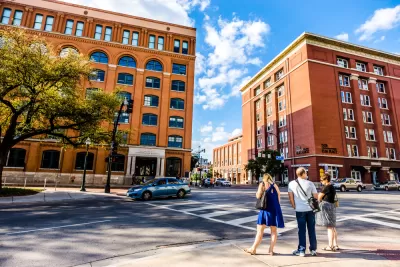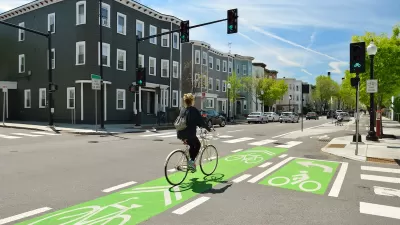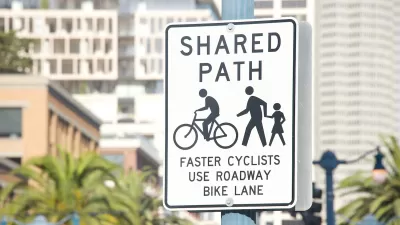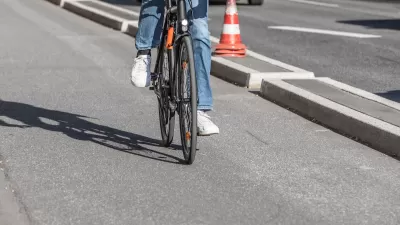After decades of neglect, a team of designers reimagines the infamous plaza as a safe, vibrant, multimodal public space.

Writing in the Dallas Morning News, Mark Lamster presents a new proposal for Dallas’ Dealey Plaza developed by a team of designers commissioned by the Dallas Morning News: “a big idea, complete with renderings and architectural drawings — to show how these spaces could be transformed; to suggest what is possible if the city can summon its collective will.”
The area, Lamster writes, has transitioned from “a celebratory and gracious gateway into a city on the rise” to a place “perilous to navigate, marked by tawdry vandalism and utterly inadequate to both [its] historical gravity and to the functional demands of the city.”
Yet these sites, Lamster argues, “are where the city began, and the site of several of its most tragic moments in history, from the lynchings of the Civil War era to the assassination of President John F. Kennedy. Today, they are centers of tourism and public gathering, and a principal point of access to downtown.”
The article includes a history of the plaza and its environs, complete with historical photos, explains how current conditions impede pedestrian access and safety, and includes detailed renderings and descriptions of the proposed redesign. The plan envisions a pedestrian-oriented, greenery-rich space that improves mobility and pays homage to the site’s natural and social history.
According to Lamster, “The plan would give Dallas a dramatic new destination for visitors, a vital space linking institutions dedicated to history, justice, memory and community.” See the source article for ample renderings and more details.
FULL STORY: Reinventing Dealey Plaza

Alabama: Trump Terminates Settlements for Black Communities Harmed By Raw Sewage
Trump deemed the landmark civil rights agreement “illegal DEI and environmental justice policy.”

Study: Maui’s Plan to Convert Vacation Rentals to Long-Term Housing Could Cause Nearly $1 Billion Economic Loss
The plan would reduce visitor accommodation by 25% resulting in 1,900 jobs lost.

Why Should We Subsidize Public Transportation?
Many public transit agencies face financial stress due to rising costs, declining fare revenue, and declining subsidies. Transit advocates must provide a strong business case for increasing public transit funding.

Wind Energy on the Rise Despite Federal Policy Reversal
The Trump administration is revoking federal support for renewable energy, but demand for new projects continues unabated.

Passengers Flock to Caltrain After Electrification
The new electric trains are running faster and more reliably, leading to strong ridership growth on the Bay Area rail system.

Texas Churches Rally Behind ‘Yes in God’s Back Yard’ Legislation
Religious leaders want the state to reduce zoning regulations to streamline leasing church-owned land to housing developers.
Urban Design for Planners 1: Software Tools
This six-course series explores essential urban design concepts using open source software and equips planners with the tools they need to participate fully in the urban design process.
Planning for Universal Design
Learn the tools for implementing Universal Design in planning regulations.
Caltrans
Smith Gee Studio
Institute for Housing and Urban Development Studies (IHS)
City of Grandview
Harvard GSD Executive Education
Toledo-Lucas County Plan Commissions
Salt Lake City
NYU Wagner Graduate School of Public Service





























